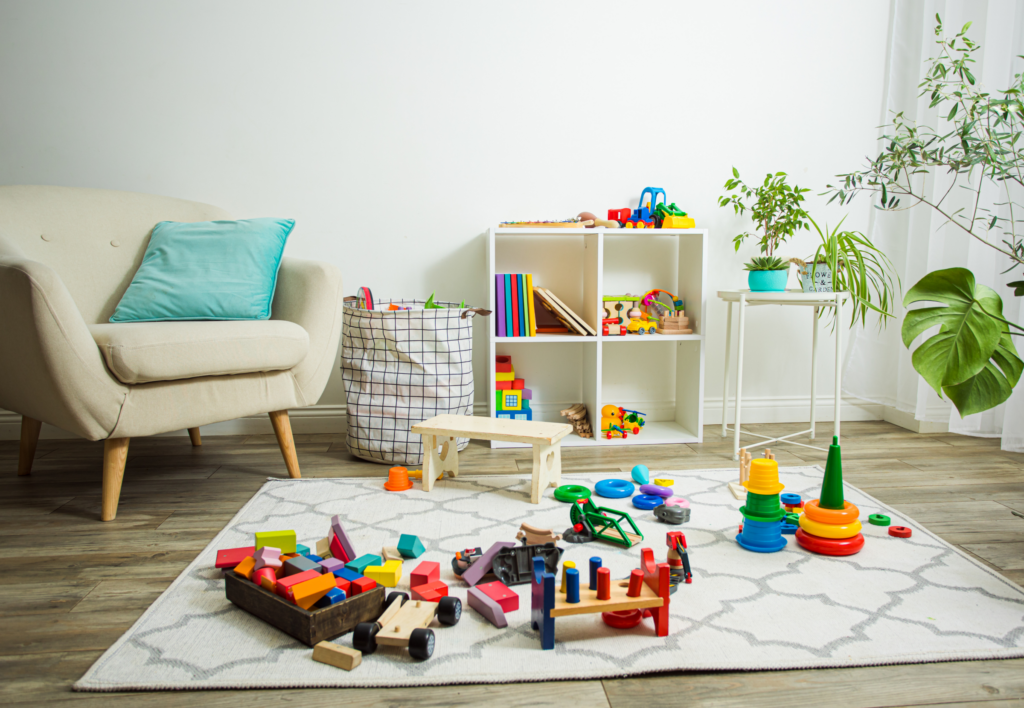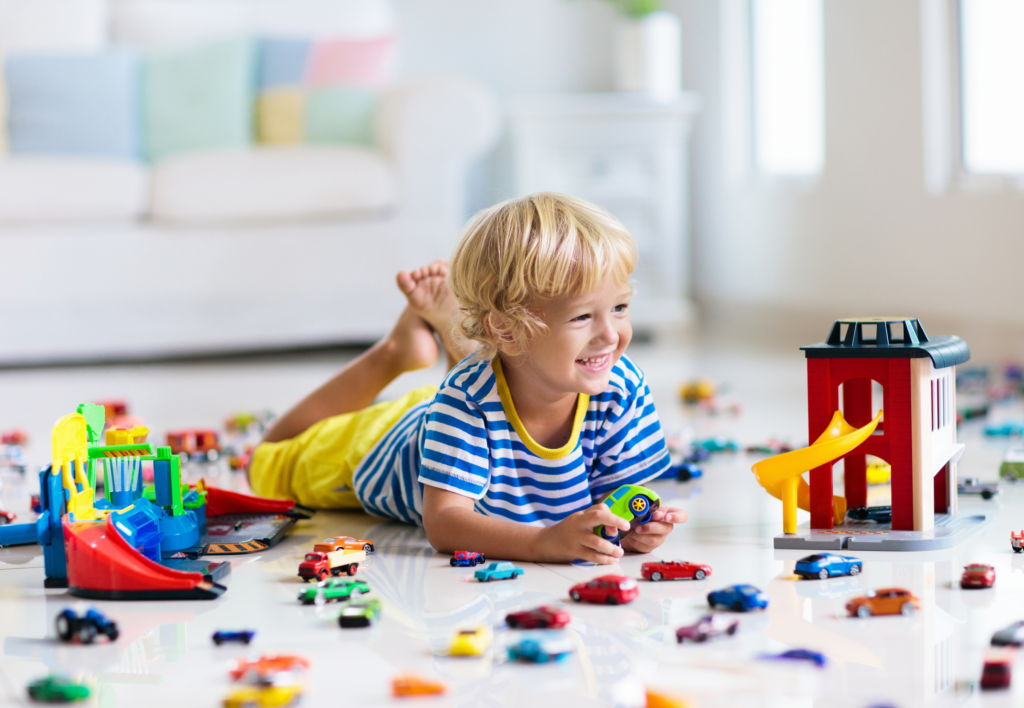Top 5 Toy Organization Strategies for Post-Holiday Clutter!
The holiday season is a time of joy, laughter, and, quite often, an abundance of new toys scattered throughout the house. As the festive cheer winds down, many parents are left with the daunting task of finding homes for the latest additions to their children’s collections.
Decluttering, organizing, and storing toys after the holidays not only clears the physical space in your home but also helps to maintain a sense of order and calm that benefits the entire family.
In this post, we’ll explore seven essential tips to tackle the post-holiday toy situation, ensuring your home is both child-friendly and clutter-free. Let’s dive in and turn the chaos into tranquility with these fun and practical strategies!
1. Start with a Post-Holiday Toy Audit
The first step to conquering the toy clutter is to conduct a thorough toy audit. This involves taking inventory of all the toys and deciding which ones will stay and which will go. Why does this work?
A toy audit helps to identify duplicates, toys that are no longer age-appropriate, and items that your children have outgrown or lost interest in. It’s a chance to refresh the play environment and make room for new favorites.
Fun Idea: Make the audit a game! Challenge your kids to find the ‘hidden treasures’—toys they haven’t played with in a while that can be donated to other children.
Quick Tip: Use clear bins to sort toys into categories: keep, donate, repair, and recycle. Label each bin and let your kids help decide where each toy should go. This not only speeds up the process but also teaches valuable lessons about organization and charity.

2. Embrace the ‘One In, One Out’ Rule
After the influx of new toys during the holidays, it’s the perfect time to adopt the ‘One In, One Out’ rule. This simple yet effective strategy ensures that your toy collection doesn’t grow uncontrollably. For every new toy that enters the house, an old one must leave.
This idea works because it encourages continuous curation of the toy collection and prevents the accumulation of unused toys.
Fun Idea: Host a ‘Toy Farewell Party’ where your kids can say goodbye to the toys they’re passing on. This can be an enjoyable way for them to learn about sharing and letting go.
Quick Tip: Keep a designated ‘outbox’ where your kids can place toys they are ready to part with. Once the box is full, take a family trip to donate these items to a local charity or shelter.
3. Categorize and Zone Play Areas
Creating specific zones for different types of play can dramatically improve the functionality of your home.
By categorizing toys and designating areas for them, children know exactly where to find and put away their toys. This works because it reduces the time spent searching for toys and makes cleanup quicker and more efficient.
Fun Idea: Turn categorization into a DIY labeling project. Use pictures and words to create custom labels for bins and shelves. This not only adds a personal touch but also helps non-readers identify where things go.
Quick Tip: Use color-coded bins for different categories, like action figures, art supplies, and building blocks. This visual system makes it easier for kids to remember where to put things and adds a pop of color to play areas.

4. Invest in the Right Storage Solutions
Choosing the right storage solutions is essential for maintaining the newfound order in your home. The right containers and organizers can make all the difference in how toys are stored and accessed.
This idea works because it provides a designated spot for every item, which helps prevent toys from being scattered around the house. When toys have a specific place, it’s easier for children to clean up after themselves and for parents to manage the overall tidiness of the space.
Fun Idea: Involve your children in selecting storage bins or decorating plain ones. They can use stickers, paint, or markers to personalize their storage containers. This gives them a sense of ownership and makes them more likely to use the storage system.
Quick Tip: Opt for clear, stackable bins with lids for small toys and sets with multiple pieces. They’re great for seeing what’s inside without having to open them and can be neatly stacked to save space. For larger toys, open bins or baskets are ideal as they allow for easy access and quick clean-up.
5. Utilize Vertical Space Wisely
Vertical space is often underutilized in toy organization. Utilizing walls and the backs of doors can free up floor space and make a room feel more open and less cluttered.
This strategy works because it takes advantage of the unused space at eye level and above, making it perfect for items that aren’t used daily but still need to be accessible.
Fun Idea: Create a gallery wall for your child’s artwork using clipboards or frames. This not only displays their creations but also keeps paper clutter off surfaces and in order.
Quick Tip: Install floating shelves at a safe height to display frequently used toys or books, making them easy for kids to reach and put away. Over-the-door shoe organizers are also excellent for storing small toys, art supplies, or even game controllers and accessories.
6. Rotate Toys Regularly
Toy rotation is a dynamic way to manage your children’s playthings by keeping a subset of toys available at any given time, while the rest are stored away.
This method keeps clutter to a minimum and maintains children’s interest in their toys, as previously stored toys feel new again when reintroduced. Regular rotation prevents the sense of overwhelm that too many choices can create and encourages deeper engagement with each toy.
Fun Idea: Involve your children in the rotation process by letting them select the toys for the next rotation period. This can be done monthly or seasonally and gives them something to look forward to.
Quick Tip: Use large plastic bins to store the rotated-out toys and keep them out of sight in a closet, basement, or attic. Label the bins with the contents and the date of rotation so you can easily keep track of what’s available and what’s been stored.

7. Schedule Regular Decluttering Sessions
To maintain the order you’ve achieved with your toy organization, it’s helpful to schedule regular decluttering sessions. By revisiting your toy collection periodically, you can reassess what’s being used, what can be donated, and what might need to be replaced.
This habit ensures that toy organization is a continual process and prevents the build-up of unused or broken toys.
Fun Idea: Make decluttering sessions a family event with music, snacks, and a sense of celebration. It’s a great opportunity to spend time together and reinforce the values of tidiness and generosity.
Quick Tip: Set a calendar reminder for your decluttering sessions, perhaps at the change of seasons or before birthdays and holidays when new toys are likely to enter the home. This will help you stay on top of toy organization without letting it become an overwhelming chore.
Conclusion
By following these seven essential tips, you’ll find that decluttering, organizing, and storing toys after the holidays can be a manageable and even enjoyable task.
Each strategy serves to create a more orderly space, reduce stress, and foster an environment where your children can play and explore without being overwhelmed by clutter.
Remember, the goal is not perfection but rather creating a functional system that works for your family’s unique needs and lifestyle. Happy organizing!
Let Us Know How We’re Doing!
Did this expertly prepared resource answer your question?
Do you have another question about home maintenance, home improvement projects, home appliance repair, or something else?
Get more information, send in questions and keep the discussion going by contacting the I’ll Just Fix It Myself company customer service team at at 1-800-928-1490 or Email us at [email protected]
